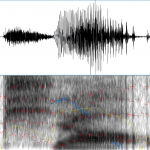Articles in the ‘Intermediate’ category Page 33
-
Launching Hacking Chinese Resources
“Resources” is a new section of Hacking Chinese that strives to provide you with resources for learning Chinese suitable to you. Everything is neatly tagged by difficulty level, topic/skill and type of resource, enabling you to find whatever you need, whenever you need it.
Read → -
A learner’s guide to TV shows in Chinese, part 1
After having talked about how and why to use television to learn Chinese, it’s time to look at actual genres and programmes and see how these can help a language learner improve his or her skills. In this first article, the focus is on sports (including e-sports), drama, super idol drama, talk shows, news, documentaries and travel shows.
Read → -
Sensible character learning challenge 2014: Milestone #3
The second milestone in the 2014 sensible character learning challenge has now been reached! This is also the last opportunity to join the challenge if you haven’t already. If you have, it’s time to report you progress in May. This article also contains information about prizes (character posters, free extensions and Chinese learning products) for the third milestone, as well as my own reflections of my character learning.
Read → -
How and why to use television to learn Chinese
Television is a valuable asset in the modern language learners toolkit. The medium provides a convenient way to enjoy large volumes of passive listening practice in a stress free environment. The combination of visual and auditory senses makes the medium accessible to the entire spectrum of Chinese learners, from the beginner through to advanced learners. This is article is about how and why to use television to learn Chinese.
Read → -
How to find out how good your Chinese pronunciation really is
Evaluating pronunciation needn’t be hard, but many methods commonly used by teachers are deeply flawed, resulting in inaccurate error analysis. If we want to improve, we need to be clear about what we need to improve first. This article looks at some problems with commonly used methods to evaluate pronunciation and suggests some alternatives.
Read → -
How to Approach Chinese Grammar
In this article John Pasden discusses how to approach Chinese grammar as a foreigner, starting by debunking a few myths and then going on to how to actually learn grammar. Chinese is a language where you can very far with just a few basic concepts and patterns, so make the most of what you learn and try to use it immediately. Then extend your knowledge gradually and return to old patterns for a more detailed look later when you actually need to. Grammar learning should be driven by an actual need for better ways of expressing yourself or understanding what people say to you!
Read → -
Sensible character learning challenge 2014: Milestone #2
The second milestone in the 2014 sensible character learning challenge has now been reached! This is a good opportunity to join the challenge if you haven’t already, and if you have, it’s time to report how the five weeks have gone. This article also contains information about prizes (character posters, free extensions and more) for the second milestone, as well as my own reflections of my character learning.
Read → -
Handwriting Chinese characters: The minimum requirements
This is a guide to handwriting Chinese characters. It’s not about writing beautifully, but writing correctly, including things like stroke placement, length and direction. There are numerous examples of handwritten characters (real examples, not typed characters) along with practical exercises to see if you have grasped the core ideas. The article goes somewhat beyond the bare minimum for beginners, but is certainly a must for anyone who cares about handwriting Chinese characters.
Read → -
Learn to read Chinese… with ease?
Can you learn to read Chinese with ease? ShaoLan, among others, claims that you can. However, these arguments involve a lot of cherry-picking and are mostly exaggerated.
Read → -
The grand listening cycle: Improve your Chinese listening ability
Learning to understand spoken Chinese is mostly a matter of practice and I’ve found that having fixed and regular routines helps a lot. This article introduces the grand listening cycle, which contains almost everything you want when it comes to listening ability. It’s a method I’ve used extensively to improve my own listening comprehension and it has helped me immensely.
Read →





